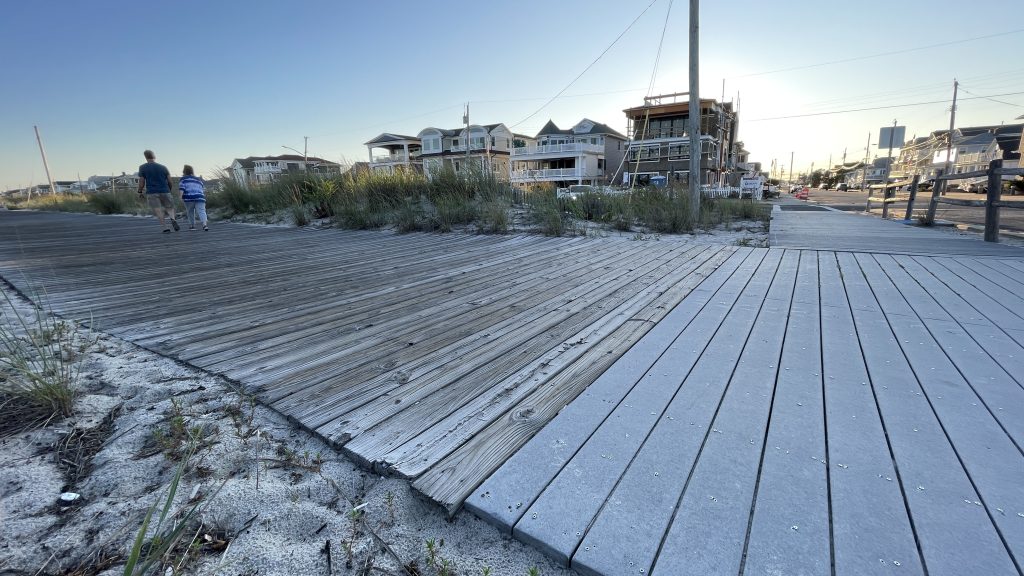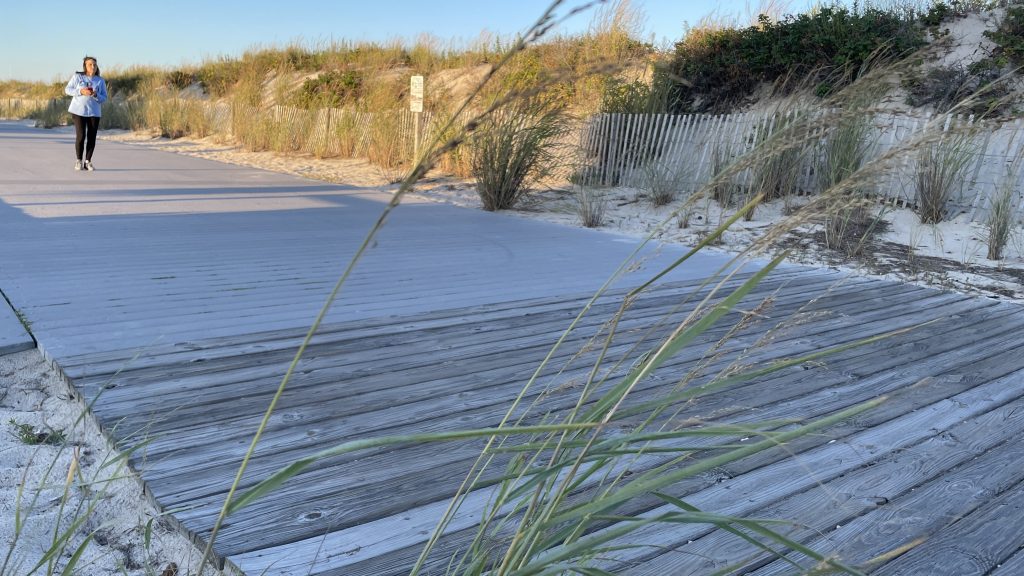Seaside Park officials are expected to vote later this week on the introduction of an ordinance that would fun $12.3 million in funding for a multi-phase boardwalk replacement project.
After being snubbed by the state’s $100 million boardwalk preservation fund earlier this year, borough officials decided to turn to the state’s infrastructure bank, commonly known as the ‘I-Bank,” for financing for the project, which would replace the boardwalk along a span of 17 blocks.
“Our bond counsel … has been instrumental in putting together the paperwork,” said Mayor John Peterson, expecting the matter to come for a vote at the council’s meeting this Thursday. If the measure is introduced, it would then be subject to a public hearing and second vote.
Seaside Park was already approved for funding from the I-Bank in the spring.
The I-Bank is a state-run bank that loans money to municipalities and counties for infrastructure projects. Under the terms of the deal offered to Seaside Park, 50 percent of the loan would be provided with zero interest and the other half would be provided at a rate far lower than the market rate – less than an agency with an AAA bond rating. The money could be paid back over the course of 31 years.
In some occasional cases, I-Bank loans are forgiven by the state, however forgiveness is not part of the terms offered to Seaside Park at the outlay.
“They hold the door open and say that, at some points in the state’s history, there has been forgiveness,” said Peterson. “But it’s not guaranteed,”
In total, the I-Bank would finance up to $12,218,273, which is expected to be enough to cover the entirety of the project. Specifically, the boardwalk would be replaced from K Street to 5th Avenue in multiple phases. According to Councilman William Kraft, who has been spearheading the project, the I-Bank loan works similarly to a home equity line of credit, and the borough would be able to utilize funding as needed.
The boardwalk replacement project is expected to be more intensive than simply replacing planks. In addition to the redecking and replacement of underlying infrastructure, the project would also include the construction of new handicap-accessible ramps to the boardwalk.
“We need to actually dig out and reconfigure the infrastructure, including the support pilings, cross beams and stringers,” Peterson said previously.
The affected section of boardwalk is made of timber rather than the gray Trex-style decking material that makes up the rest of the boardwalk. It starts approximately at the lifeguard headquarters in the northern portion of the borough and runs south for 17 blocks.
The borough, even after accepting the line of credit, would still pursue grant funding from other sources, officials said.
“Any grant money we receive along the line would be directly applied to the project or can also be applied to payment of the notes or bond obligations,” said Kraft.
The timeline for the project is still to be determined. If the council passes the ordinance accepting the financing, permits and other approvals must be obtained from the state, and the project would be placed out to bid. As it currently stands, the borough cannot start work, as a development permit required under the state’s Coastal Areas Facilities Review Act (CAFRA) is still pending before the Department of Environmental Protection, said Borough Administrator Karen Kroon. A few other factors must also be addressed before the state issues the necessary permits.
“We’re still going through some machinations with DEP in terms of where we have to move the handicap-accessible ramps, dune plantings and some of the things that will be disturbed,” said Kroon. “We’re going through that with DEP right now.”
Obtaining a CAFRA permit is a notoriously lengthy process in New Jersey, often taking upwards of six months or more.
The council is scheduled to meet Thursday, Sept. 19 at 7 p.m. The ordinance, if introduced, would be up for adoption at the Oct. 3 meeting, Kraft said.

Advertisement

Seaside Heights & Seaside Park
PBS ‘Shore Week’ Series to Chronicle Seaside Heights Broadway Performances

Police, Fire & Courts
Vehicle Careens Off Route 37 Causeway, Driver Gets Multiple Summonses

Police, Fire & Courts
Seaside Park Police Blotter: Directions Home, Keeping an Eye Out

Police, Fire & Courts
Cops: Juvenile Arrested After 118mph Joy Ride in Seaside Heights, Toms River Kills 2

Seaside Heights & Seaside Park
Seaside Heights Mourns Passing of Boardwalk Legend, Still Working Into His 90s










